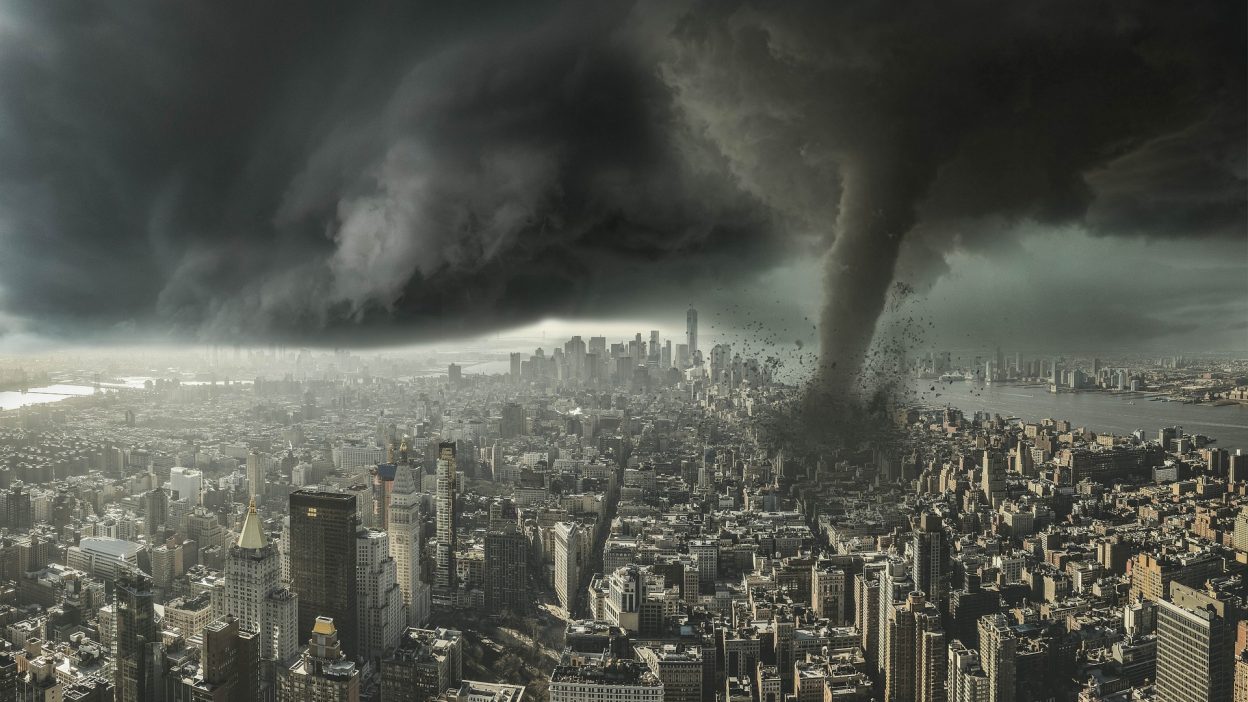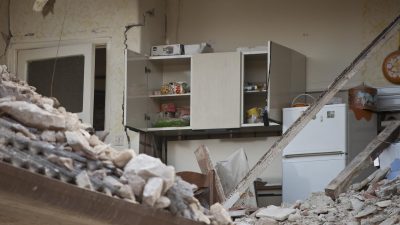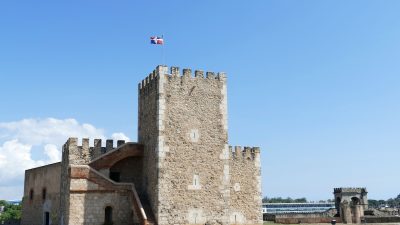America’s Forgotten Storm Of Death
1. The Day the Sky Turned Black: What Really Happened on 7th May 1840?
On 7th May 1840, the peaceful town of Natchez, Mississippi, awoke to what seemed like an ordinary day. Merchants bustled in the market, workers loaded goods onto steamboats, and families went about their daily routines. Yet, within hours, the skies darkened ominously, and an unsettling silence gripped the town. Suddenly, an immense tornado formed, tearing through Natchez and neighbouring Vidalia with an unrelenting force.
Winds exceeding 200 mph obliterated homes, businesses, and boats, leaving an apocalyptic trail of destruction. Those who witnessed the event described a monstrous, swirling column of black fury, devouring everything in its path. The Mississippi River, usually a lifeline for commerce, became a floating graveyard, as vessels overturned and countless lives were lost to the merciless storm.
2. A Disaster Nobody Saw Coming: Why Was There No Warning?
The tragedy of the Great Natchez Tornado was amplified by the sheer lack of preparedness. In 1840, meteorology was still in its infancy, and tornado forecasting was virtually nonexistent. Unlike today, where satellites and radar provide advanced warnings, the people of Natchez had no way of knowing what was coming.
The storm struck suddenly, giving residents mere seconds to react. The lack of early warning systems meant that those in vulnerable areas, especially along the riverbanks and in crowded markets, had no chance to seek shelter. Many were caught in the open, with no option but to face nature’s wrath head-on. Had there been even a fraction of the technology available today, hundreds of lives might have been spared.
3. A City Torn Apart: The Unimaginable Death Toll and Destruction
- Over 317 Confirmed Dead – The official death toll reached 317, making it the second-deadliest tornado in U.S. history. However, many believe the true number was far higher due to unrecorded slave deaths.
- 109 People Seriously Injured – With medical facilities limited, many wounded succumbed to their injuries days later.
- The Mississippi River Became a Graveyard – Dozens of steamboats were overturned, and entire families drowned as the storm struck.
- A Town in Ruins – Natchez and Vidalia suffered near-total destruction, with businesses, homes, and infrastructure obliterated in minutes.
4. Rich vs Poor: Why the Natchez Underclass Suffered the Most
As with many historical disasters, the impact of the Natchez Tornado was not felt equally. While wealthier citizens had stronger homes and greater access to assistance, the working class and enslaved population bore the brunt of the devastation.
Plantation owners and merchants were able to rebuild their fortunes, but thousands of labourers and slaves were left without homes or aid. The storm not only highlighted nature’s indiscriminate fury but also exposed the deep societal divides that determined who lived and who died. The lack of historical records on the enslaved victims only adds to the injustice, as many lives were simply erased from official accounts.
5. The Tornado That Sank Ships: The Horror on the Mississippi River
Perhaps the most haunting aspect of the Great Natchez Tornado was the devastation it caused on the Mississippi River. At the time, the river was teeming with commercial and passenger vessels. As the tornado touched down on the water, boats were flung into the air like paper, their wooden hulls shattering upon impact.
Steamboats, once symbols of progress and prosperity, became floating death traps. Crews and passengers had nowhere to escape as towering waves and violent winds swallowed them whole. Bodies were found miles downstream, some never recovered at all. The river, which had once sustained life and commerce, became a grim reminder of nature’s unrelenting power.
6. The Cost of Rebuilding: How Natchez Struggled to Rise Again
In the aftermath of the disaster, Natchez faced an uphill battle to rebuild. With hundreds dead and infrastructure decimated, the town struggled to regain its former prominence. Businesses were wiped out, homes were reduced to rubble, and countless families found themselves homeless overnight.
Unlike modern disaster relief efforts, there was no governmental assistance or humanitarian aid. The burden of reconstruction fell solely on the survivors, many of whom lacked the resources to rebuild. The economic impact was staggering, and while some parts of Natchez eventually recovered, the scars of that fateful day remained deeply ingrained in the town’s history.
7. Could This Have Been Prevented? The Role of Human Negligence
- No Tornado Preparedness – At the time, tornadoes were not well understood, and no efforts were made to prepare for such disasters.
- Poor Infrastructure – Buildings were not constructed to withstand severe storms, making them highly vulnerable to collapse.
- Lack of Evacuation Plans – Had there been even basic emergency protocols, some residents might have been able to seek shelter.
- Slaves Left to Die – Many enslaved people had no access to shelter or safety, leading to disproportionately high casualties.
8. Could the Great Natchez Tornado Have Been Prevented?
At the time of the 1840 disaster, meteorology was in its infancy, and there were no early warning systems. Today, modern advancements in tornado prediction and warning systems could potentially reduce casualties in similar events. However, preventing a tornado itself remains impossible. Enhanced infrastructure, better public awareness, and emergency response planning might have reduced the number of deaths.
The lack of communication and scientific understanding in the 19th century made it impossible to take preventive measures. Many residents were unaware of the looming disaster until it was too late. Had they received a warning, many could have sought shelter or evacuated, saving lives. This tornado serves as a lesson for modern preparedness against natural disasters.
9. Lessons from Natchez: Are We Any Safer Today?
Over a century later, disaster response has vastly improved, but tornadoes remain deadly. The Great Natchez Tornado highlighted the urgent need for storm tracking, preparedness, and public safety measures. Today, meteorological technology, including Doppler radar and satellite systems, provides early warnings that can save lives.
Additionally, modern infrastructure is designed to withstand extreme weather conditions, and tornado shelters are now common in high-risk areas. Public awareness campaigns have also played a crucial role in educating communities about tornado safety. While we can never fully eliminate the risk of tornadoes, society is significantly better prepared to handle them than in 1840.
10. Remembering the Tragedy: Why Natchez Still Matters
The Great Natchez Tornado remains one of the deadliest in U.S. history, yet it is often overshadowed by more recent disasters. Its devastating impact serves as a reminder of the fragility of human life in the face of nature’s fury. The tragedy also emphasises the importance of continued research, preparedness, and infrastructure development to mitigate future disasters.
Commemorating this event helps ensure that the lessons learned from it are not forgotten. By understanding the past, we can strive to protect future generations from similar devastation. The Great Natchez Tornado is not just a historical event—it is a warning from history itself.
Frequently Asked Questions (FAQs)
1. How many people died in the Great Natchez Tornado?
The tornado killed an estimated 317 people, making it the second-deadliest tornado in U.S. history. However, the actual number may have been higher due to unrecorded slave deaths.
2. Why was the Natchez Tornado so deadly?
Many victims were caught on boats along the Mississippi River, which offered no protection. The lack of an early warning system and poorly constructed buildings also contributed to the high death toll.
3. How powerful was the Natchez Tornado?
Though there was no official rating system at the time, experts estimate it would have been at least an EF5 tornado, with winds exceeding 200 mph.
4. Did the tornado completely destroy Natchez?
While much of Natchez was devastated, the worst destruction was along the riverfront, where homes, boats, and businesses were obliterated. Some parts of the city remained intact.
5. Could a tornado like this happen again?
Yes, powerful tornadoes are still possible in the Mississippi region. However, modern weather tracking and emergency preparedness would likely reduce casualties in a similar event today.




